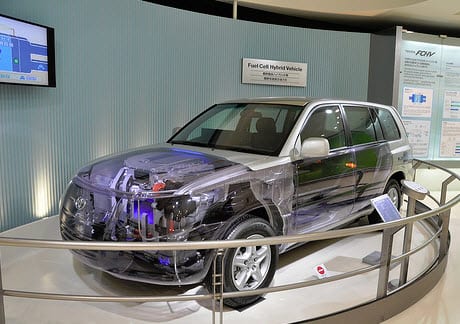Putting Together the Ultimate Eco-Friendly Car
September 21, 2013Toyota is finally unveiling plans for a hydrogen fuel cell car due out in 2014. This eco-conscious vehicle is designed to produce more MPG using hydrogen, while producing little to no CO2. But it is not the ultimate eco-friendly machine — unless you add your own enhancements.
Advances in areas of manufacturing, such as tire science and aerodynamics, are long overdue according to some. They provide a host of alternative ways to increase a vehicle’s MPG. If you are really concerned about our planet, find out how these parts turn a new fuel cell vehicle into the ultimate eco-friendly car.
These eco-conscious aftermarket upgrades also make saving the earth more fun. Most will enhance the car’s performance and make it look cooler.
Less Tire Friction Equals More MPGs
The most important component of your ultimate eco-friendly car is found at the point where rubber meets the road. Add on a pair of friction-reducing eco-friendly tires to add a few MPG. Kumho’s new ECO Solus KL21 tires have a friction-reducing tread pattern and a silica-based compound, both designed to reduce tire friction.
The tire lasts longer, too, so you are conserving other resources such as rubber, contributing less to production pollution, and using up fewer resources. This tire, which is available online at TireBuyer, truly has a green conscience all the way around.
Such a Drag
A front spoiler helps deflect air currents up over the front windshield of the car, producing a more streamlined wind drag profile to reduce drag. Drag is a serious eco-friendly buzz killer, and it can reduce MPGs. Installing a spoiler will make your car the ultimate in eco-friendly design.
Eco-Friendly Recycled Parts Lower Petroleum Consumption
Take care of the inside of your car, and it will take care of you. That means installing more earth-friendly interiors. Try a soy-foam seat cushion, or a dashboard made of recycled plastic materials. Or, how about a coconut-fiber reinforced side panel? All of these are real innovations for the ultimate green vehicle.
Other options to include on your new eco-mobile are recycled resins for the parts underneath the vehicle, and recycled fabrics and threads for upholstery and seats. Replacing any interior part that does not contribute to overall performance with a recycled material will reduce your car’s footprint.
A few options include using recycled plastics on dash panel pieces, or reinforcing other parts with wheat straw and other lighter weight materials. Since molded parts require the use of petroleum, this actually saves resources.
Lighter materials installed inside also make the car lighter, improving gas mileage.
Creative Commons image by Marufish

 HFN News is your leading source for fresh hydrogen and renewable energy updates. Amid the fast-paced growth of hydrogen companies, we provide top-notch news and insights about this exciting sector. Our coverage spans from hydrogen cars to global sustainable initiatives, and we highlight the latest in green jobs and developing hydrogen hubs. We invite you to share your local hydrogen news and explore today’s renewable energy job listings on our site. Thanks for choosing HFN News as your trusted guide to the hydrogen and renewable energy world!
HFN News is your leading source for fresh hydrogen and renewable energy updates. Amid the fast-paced growth of hydrogen companies, we provide top-notch news and insights about this exciting sector. Our coverage spans from hydrogen cars to global sustainable initiatives, and we highlight the latest in green jobs and developing hydrogen hubs. We invite you to share your local hydrogen news and explore today’s renewable energy job listings on our site. Thanks for choosing HFN News as your trusted guide to the hydrogen and renewable energy world!